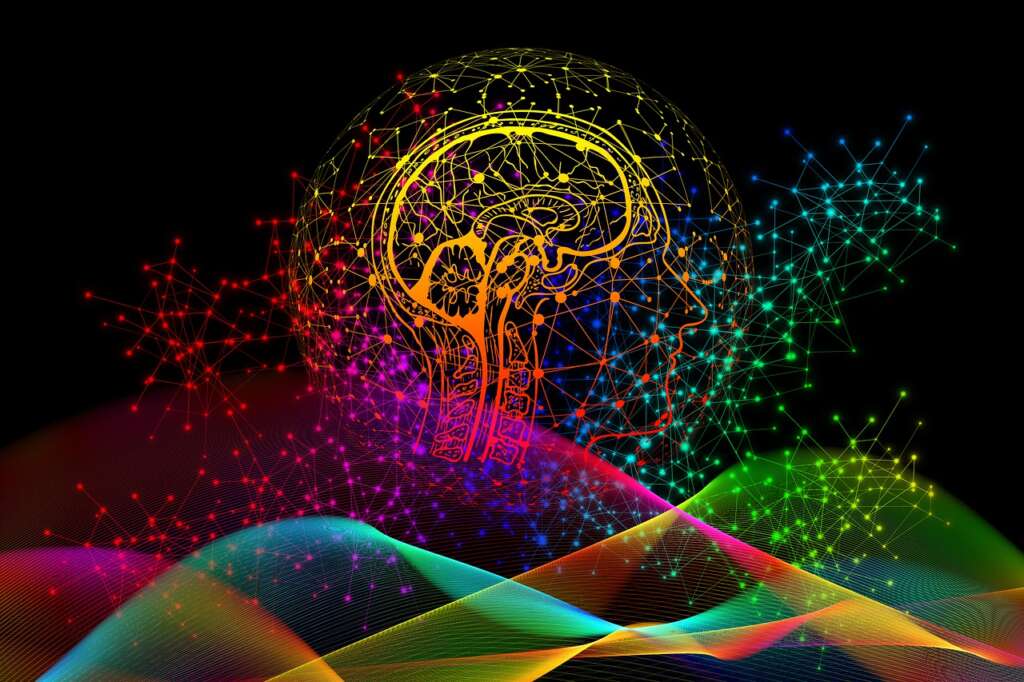Obsessive-compulsive disorder (OCD) is characterized by recurrent intrusive thoughts that take the form of obsessions coupled with repetitive, often ritualistic, behaviors. Those behaviors are called compulsions, because the individual does not have the ability to choose not to perform the actions. Often they seem irrational and sometimes even disturbing to the person, but she is compelled to perform them, because they are designed to relieve the anxiety and silence the intrusive thoughts.
A review of the literature on brain imaging reveals the role that specific brain areas play in the development of OCD symptoms. Overall, certain brain regions located at the front of the brain and others located at the mid-section of the brain have been identified as the main players in OCD, but the precise brain pattern of activity could be different across individuals with different types of OCD.
THE ORBITOFRONTAL CORTEX (OFC)
Specifically, certain brain regions exhibit functional abnormality in the way they communicate with one another. One of those brain structures is the orbitofrontal cortex (OFC); it is involved in decision-making, reward learning and emotional processing. Its activation is associated with pairing a specific response with a rewarding feeling like pleasure.
In OCD, this brain region is overactive, indicating to the person that the task that they have just performed is either incomplete or needs to be done over. As a result, the person feels the need to either repeat the action or do it over, because they do not have that feeling of satisfaction or pleasure one gets when completing a task. Instead, they feel stressed and anxious about it (i.e., obsession).
THE BASAL GANGLIA
The OFC exerts control over the basal ganglia (i.e., a group of subcortical nuclei responsible for motor control) through chemical (i.e., dopamine) reinforcement of the rewarded behavior. This brain region controls muscle movements and directs a specific behavior. In the case of OCD, the threshold of activation in the basal ganglia is lowered, which facilitates the emergence of compensatory actions to relieve the anxiety (i.e., compulsion). Thus, the basal ganglia, under the direction of a hyperactive OFC, facilitate the repetition of the rewarded action.
Although this picture is exaggeratedly simplified (nothing is simple when it comes to the brain), it helps understand what triggers obsessions and compulsions at the level of the brain. To put it in even simpler terms, the emergence of obsessions could be explained in terms of “closure”.
That is that after a task is performed, a person with OCD cannot reach “closure” or full “closure”, which would have been achieved through a feeling of pleasure or satisfaction at having completed a task. Instead, they feel tense and anxious which creates an obsession that can only be relieved through a very structured and complex set of actions or compulsions (e.g., the specific ritual of compulsive hand washing).
Evidently, the OFC and the basal ganglia are not the only brain structures involved in OCD, as the connections inside our brain are so dense and complicated that the science has not yet been able to keep up with it. Additionally, it is noteworthy to point out that science has not reached a level where a person can get an accurate diagnosis of their mental condition by just looking at their brain scan; however it is helpful as it provides information useful for therapy or cure.
References:
Huey ED, Zahn R, Krueger F, Moll J, Kapogiannis D, Wassermann EM, Grafman J. A psychological and neuroanatomical model of obsessive-compulsive disorder. J Neuropsychiatry Clin Neurosci. 2008 Fall;20(4):390-408. doi: 10.1176/jnp.2008.20.4.390. PMID: 19196924; PMCID: PMC4476073
https://labblog.uofmhealth.org/lab-report/stuck-a-loop-of-wrongness-brain-study-shows-roots-of-ocd
https://medicine.yale.edu/news-article/what-does-an-ocd-brain-look-like/

